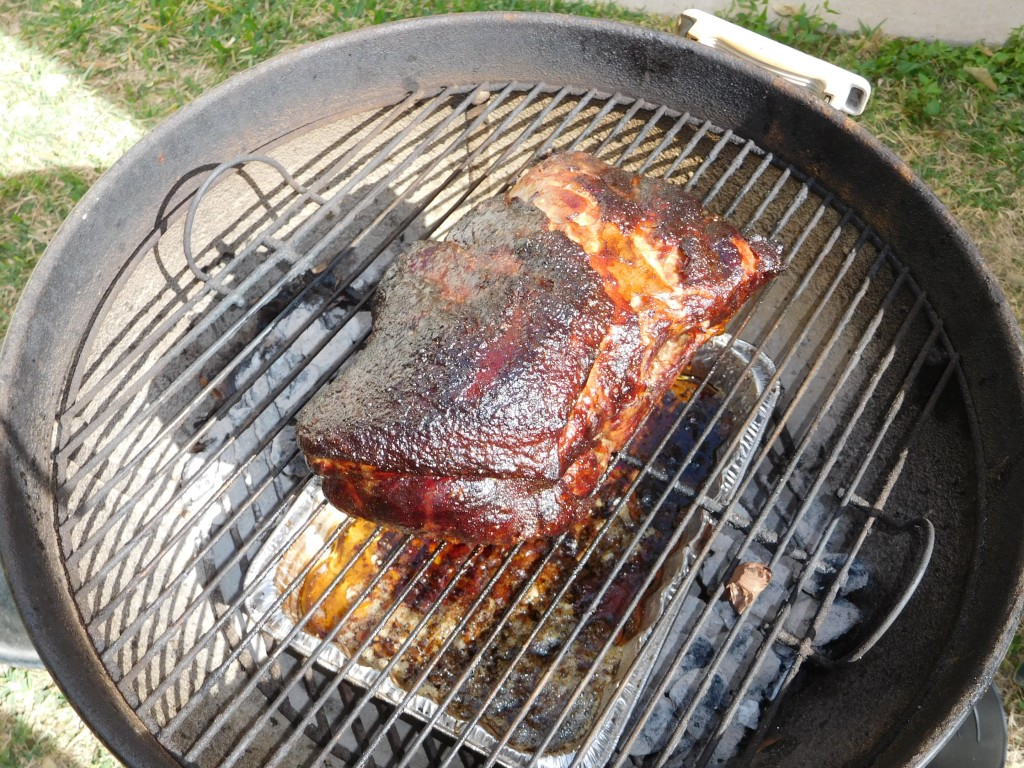
This is a link to our Pulled Pork Recipe and Instructions
The whole business of barbecue can get quite serious in a hurry. Barbecue is a method of cooking at a low temperature, often with indirect heat, using spices and various woods to impart a special flavor to the meat. Grilling, on the other hand, is done quickly over higher direct heat, often with a prepared barbecue sauce.
A bit of history. American barbecue dates to Colonial days, and the main area for barbecue is said to be centered in the southeastern region of the country. Over time, numerous regional specialties evolved, such as Carolina, Memphis, Kansas City, and of course, Texas styles of barbecue. The barbecue styles evolved differently based on the meats and game in an area. The cooking methods and wood used for smoking the meat was dictated by what trees were common in an area. Seasonings and the use of spice rubs and sauces help define a style, and as we will see, cultural differences also contributed to styles of barbecue.
Let’s look at barbecue styles here in Texas. There are really four styles of Texas barbecue, although there is now so much overlap that “pure” Texas styles do not really exist anymore. They are, however, interesting.
East Texas barbecue is often beef – cooked slowly over hickory wood until tender, and it often has a sweet, tomato based sauce. The area also has a lot of what is essentially ‘southern’ barbecue – usually pork, frequently prepared with a spice rub, and mopped with a spice and vinegar rub during smoking. This style is also prepared in most urban areas, and the wood used for smoking is often hardwood – oak or hickory.
Central Texas style barbecue is influenced by the cultural influx of German and other European immigrants. Towns like New Braunfels and Fredericksburg in south-central Texas are examples of German Settlements in the area. These Europeans introduced butcher shops, and the practice of smoking sausage and other meat contributed to the style of barbecue there. We can also thank the Germans for chicken fried steak – a form of schnitzel.
Western Texas barbecue is referred to as cowboy style, and often used direct heat over Mesquite wood. Beef is the primary meat. Research indicates that this style is hard to find anymore due to the popularity and spread of other styles of barbecue.
Southern Texas style barbecue has a strong Spanish or Mexican influence handed down from the ‘vaqueros’, Mexican horsemen who helped the ‘rancheros’, or ranchers tend their cattle in arid and rugged south Texas. These herdsmen often received some poorer, less popular cuts of meat for part of their pay. For example, the diaphragm (skirt steak), from which fajitas are made. Barbacoa, where barbecue got its name, is made from meat from a cows head. Goat (cabrito) and lamb are also popular meats, and mesquite is the primary wood used in south Texas barbecue. Of course other styles abound in south Texas, and it is easy to find pork, chicken and sausage being served.
Can you make great barbecue at home?
The answer is yes!
You can make real barbecue using a kettle grill or gas grill. The key is to roast the meat ‘low and slow’. The temperature should be regulated to about 250 degrees and you must cook using an indirect heat method. I use a disposable aluminum drip pan, and bank the coals to the sides of the drip pan to provide indirect heat, You will need to check the condition of the coals about every half hour, and add about 8 or 10 coals on each side of the grill when the existing coals begin to burn down. When you add your coals, it is then time to add more wood chips for smoking. Soak the chips in water for about an hour and drain before adding to the grill – you don’t want to extinguish your coals. In this case, making pulled pork, the meat will be tender when cooked to an internal temperature of about 195-205 degrees (F). When that temperature is reached, remove the meat from the grill and allow it to rest, covered loosely with foil for 30 minutes. Remove the yummy crust and set it aside, and pull the pork from the bone using fingers, forks, or ‘bear claws’. Any large chunks of fat should be discarded. Chop up the flavorful crust you removed and combine it with the tender pork. Serve with buns and barbecue sauce on the side. Chips and a dill pickle or slaw are great sides.

